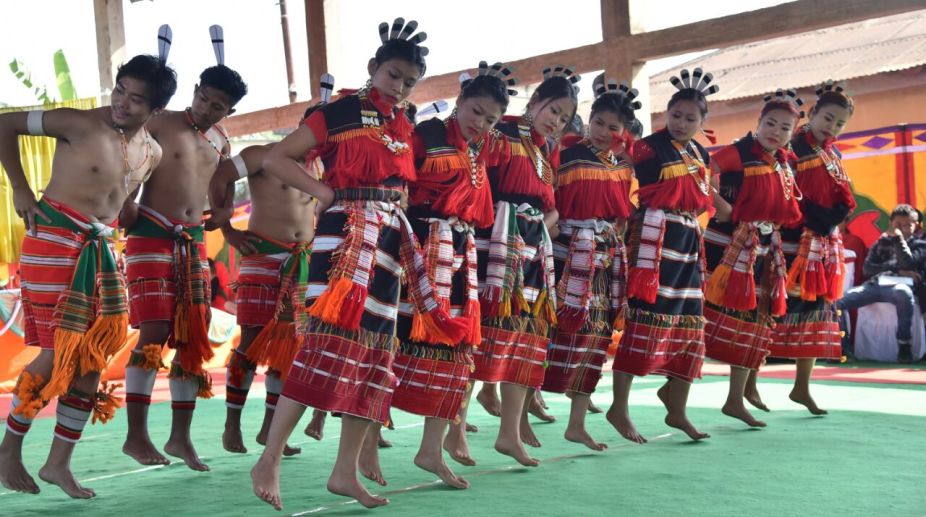The air is filled with the sound of cymbals, drumming, singing and ho-heying. And the sound got louder and faster amid laughter and happy cheers. People, young and old, dressed in new clothes and beautiful traditional wears, are out in full festive mood, echoing vibrancy and happiness. It's celebration time. It's Chakaan Gaan-Ngai, festival of the Zeliangrong Naga tribe in Northeast India.
Like in other parts of the country, the new year and harvest festivals are celebrated in this part of the country with great joy and fervour. The festival of Chakaan Gaan-Ngai is celebrated post harvest, welcoming the new year with new hope of a good year. It's a five-day-long celebration during mid January.
Advertisement
The beauty of the festival and its uniqueness lies in bringing the community together. The entire village or local people celebrate the festival together with grand feasting, dancing and singing together through the day and night.
"The festival brings people together. Our festival feasts show our hospitality. Sharing and feasting doubles our joy," Benjamin Pamei, Zeliangrong Welfare Association, Delhi, told thestatesman.com, reflecting on the beauty of the festival.
Its many unique features have a way of mesmerising every visitor and leaving everyone with an enthralling experience of a lifetime.
"Gaan-Ngai festival has a unique cultural phenomenon, aesthetic expression as it sustains the cultural heritage and way of life of the Zeliangrong people," Gailinlung Michael Pamei, Advisor to Zeliangrong Students' Union Delhi, said.
Traditionally, villagers wait for their granaries to be full. Free from agricultural activities, they rejoice in full festivity and worship the supreme god for prosperity in the coming year.
The rites and rituals performed during the festival give an insight into the rich culture and traditions of the tribe.
Danjaomei or omen taking rite, is performed by the village elders at the abode of the village deities to protect and secure the village from any disturbances during and after the festival.
Mailapmei or making of new fire is considered as one of the most important rituals. A maithan or new fire is made from dried wood and bamboo flints, from which households extract fire and is used for cooking. It is believed that partaking food cooked from the new fire gives prosperity and health.
Traditional foods, including rice beer, are prepared and served. Traditional games and sports also form an integral part of the festival.
Highlighting the importance of the festival, Benjamin said the festival helps to preserve the traditions and culture of the tribe.
"The wave of modernisation is sweeping fast. We need to preserve our rich traditions; else the younger generations will have little or no knowledge of the rich traditions and cultures practiced by their forefathers. Festivals like these are an opportune time to revive our traditions and cultures." he said.
The Zeliangrong tribe is spread over Manipur, Nagaland and Assam. The festival is today celebrated by the community not only in these three states, but also in other cities in a grand manner, fusing modernity with old traditions. Student organisations take lead roles in organising the festival.
"Gaan-Ngai is an inseparable part of Zeliangrong traditions and customs," Amu Kamei, chairman of the festival organising committee at the state level, said.
He then lauded the Manipur government (Department of Culture) for its policy on tribal culture. "The Zeliangrong Union appreciates the state government for the attention given to the tradition, culture and customs of the tribes, particularly to Gaan-Ngai," Kamei said.
With young boys and girls holding a festive gathering and singing through the night, the festival is celebrated for five days. This year, it is being celebrated from January 10 to 15.











